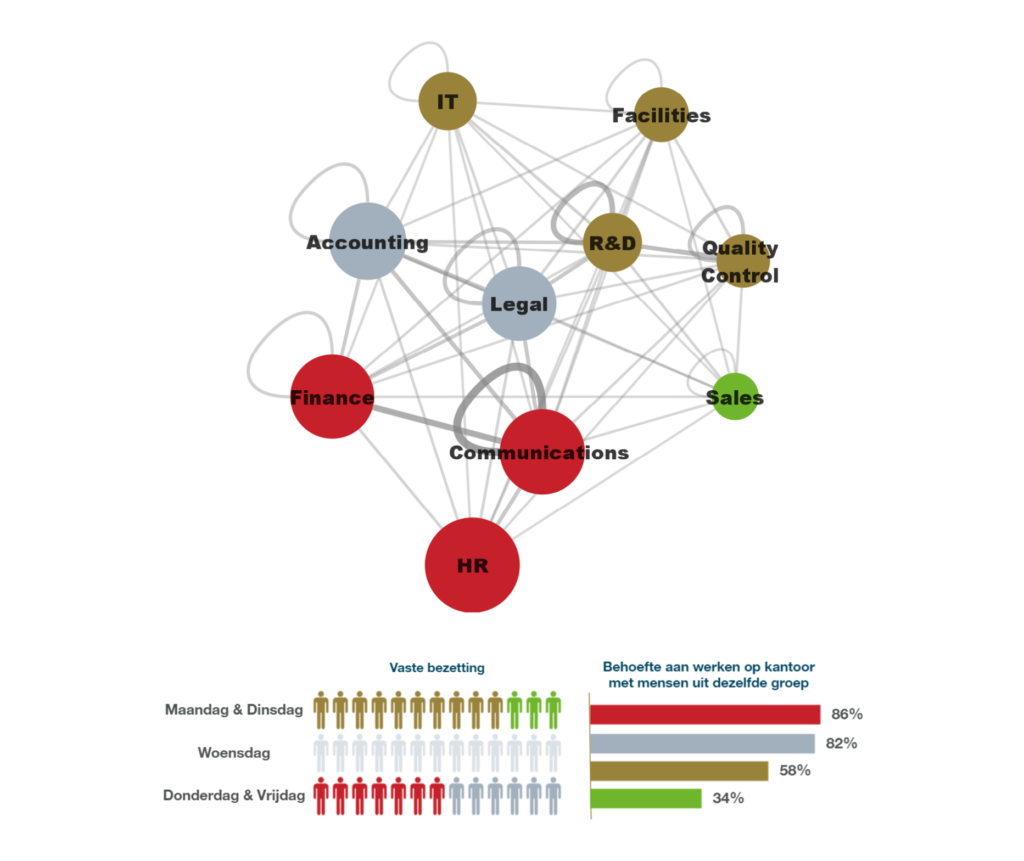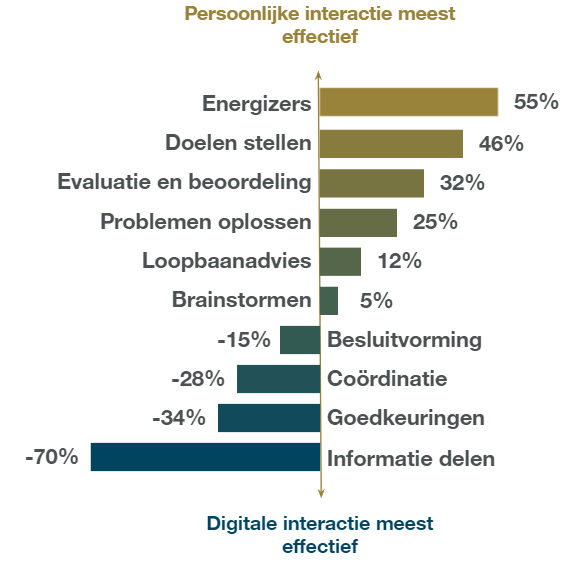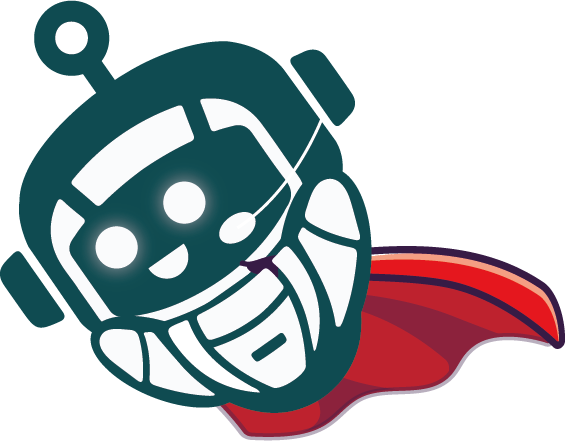Leaders of both large and small organizations are having a difficult time determining what hybrid working should look like. It is difficult to find the right balance between personal contact and digital communication. Due to a lack of data, we therefore just rely on intuition, fueled by the desire to see each other again, or certain beliefs about the effectiveness of personal or digital communication. Now that many employees have also experienced the benefits of working from home, a well-thought-out strategy is needed.
Organizational network analysis (ONA) provides a method to concretely implement the return-to-office strategy. It provides objective data that helps leaders understand which communications between employees ideally take place physically and which can also be done digitally. In doing so, they use the best consultants available: their own employees.
Let’s see how this works using an example.
Who works in the office and when?
Many workers say they would like to work from home at least one or more days a week. Without objective data, it is only difficult to determine which people should be brought together on which days.

ONA shows for this organization (a mid-sized tech company) that there are large differences in the need and demand for personal interaction. The colors clearly show four groups of teams within which the need for personal contact is much greater between teams within the group than outside it. This can be seen by the four colors in the network of Figure 1. In this case, office days on Monday and Tuesday were chosen for the gold and green teams, and Thursday and Friday for the blue and red teams. Wednesday has become the day when people from all teams can come together.
What work should be given physical priority in the hybrid model?
In the hybrid model, however, it is helpful if some guidance and direction is given from the employer as to what work should be given physical priority. Without direction, it won’t take long for employees to fall into old patterns. However, the effectiveness of physical meetings depends on their purpose: Meetings whose purpose is to inspire, provide feedback or solve problems lend themselves better to physical settings. In turn, more coordinating activities and (one-way) information transfer can be done just fine digitally.
Figure 2 shows how this is in our example. Employees indicate that they value personal contact more for more in-depth communication. Then again, for more transactional interactions, they prefer to use a digital form of communication.

How do we ensure that the transition to the hybrid model is as smooth as possible?
In the hybrid model, informal communication has become even more invisible. Group dynamics are partially digitally shaped. ONA shows the key influencers within the organization. Influencers are relatively influential in the network, which allows them to inspire and bring their environment along with them in the change. They are ideally suited to lead the transition to the new model by giving them an active role in the implementation process. Employees hired in the midst of the corona crisis, for example, will integrate more quickly with the help of these influencers. ONA also gives insight into how people fit into the bigger picture and who they like to meet physically; a strong motivator to come to the office. This will ensure that the chances of success of your change project will increase a lot!













